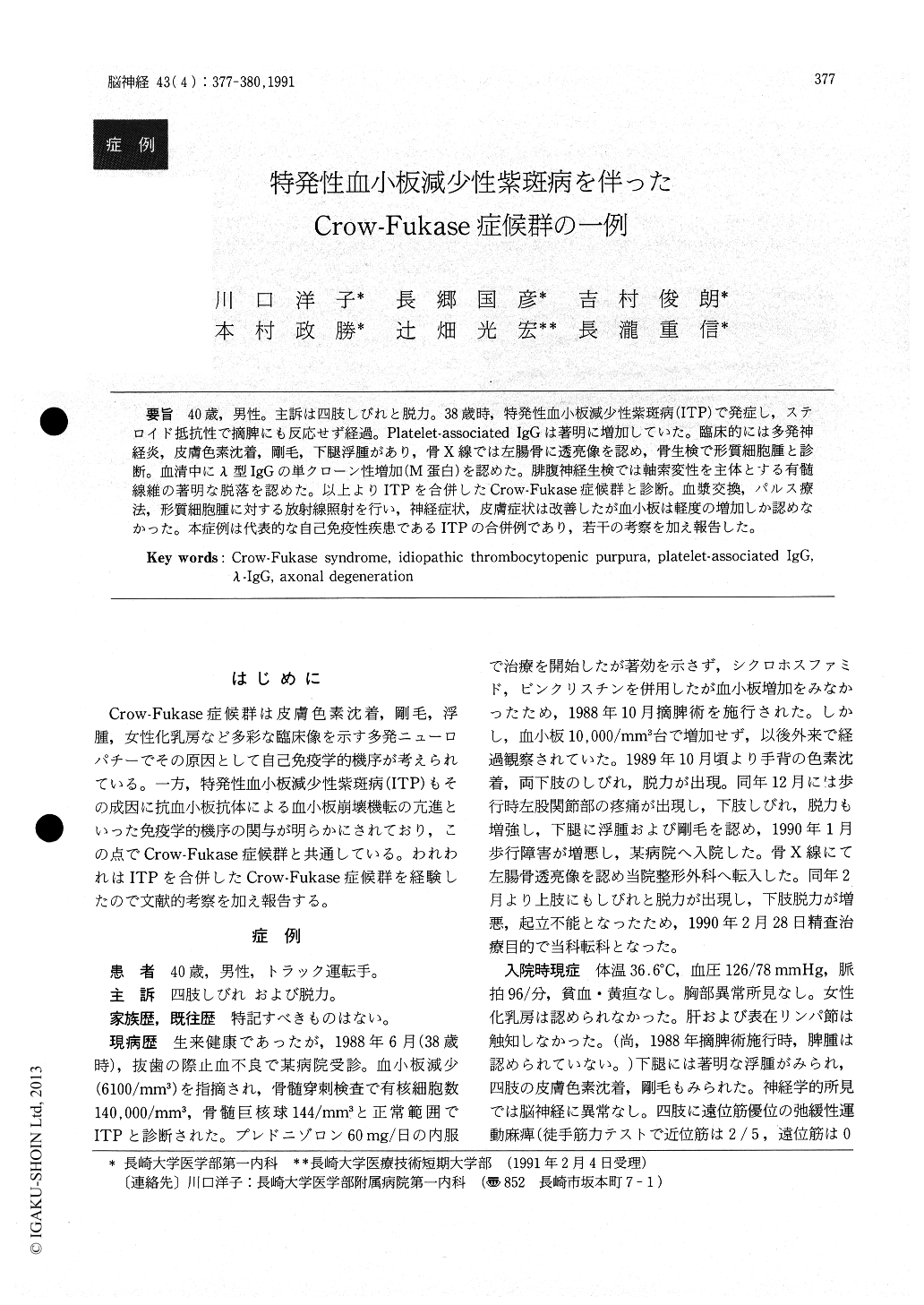Japanese
English
- 有料閲覧
- Abstract 文献概要
- 1ページ目 Look Inside
40歳,男性。主訴は四肢しびれと脱力。38歳時,特発性血小板減少性紫斑病(ITP)で発症し,ステロイド抵抗性で摘脾にも反応せず経過。Platelet-associated IgGは著明に増加していた。臨床的には多発神経炎,皮膚色素沈着,剛毛,下腿浮腫があり,骨X線では左腸骨に透亮像を認め,骨生検で形質細胞腫と診断。血清中にλ型IgGの単クローン性増加(M蛋白)を認めた。腓腹神経生検では軸索変性を主体とする有髄線維の著明な脱落を認めた。以上よりITPを合併したCrow-Fukase症候群と診断。血漿交換,パルス療法,形質細胞腫に対する放射線照射を行い,神経症状,皮膚症状は改善したが血小板は軽度の増加しか認めなかった。本症例は代表的な自己免疫性疾患であるITPの合併例であり,若干の考察を加え報告した。
A 40-year-old man was admitted to our hospital because of paresthesia and weakness of the limbs. At the age of 38, he was diagnosed as having an idiopathic thrombocytopenic purpura (ITP) which have been refractory to oral administration of predisolone and splenectomy. Platelet-associated IgG was elevated markedly at that time. It was, however, only mildly elevated on this admission. He showed polyneuritis, generalized pigmentation, hir-sutism, and marked edema on the legs. The bone X-ray disclosed a lytic lesion in the left iliac bone, which was confirmed as a plasmacytoma by bone biopsy. Axonal degeneration with marked loss of myelinated figers was seen on sural nerve biopsy. Serum immunoelectrophoresis revealed his mono-clonal IgG was λ type. Then, he was diagnosed as having a Crow-Fukase syndrome associated with ITP. Plasma exchange, pulse therapy, and irradia-tion to plasmacytoma resulted in a slight improve-ment of the polyneuritis and the skin symptoms, and a disappearance of edema. However, ITP has not responded to these therapies. Although the same autoimmune mechanism is suggested in these condi-tions, we could not clarify how this monoclonal IgG produce both polyneuritis and ITP.

Copyright © 1991, Igaku-Shoin Ltd. All rights reserved.


